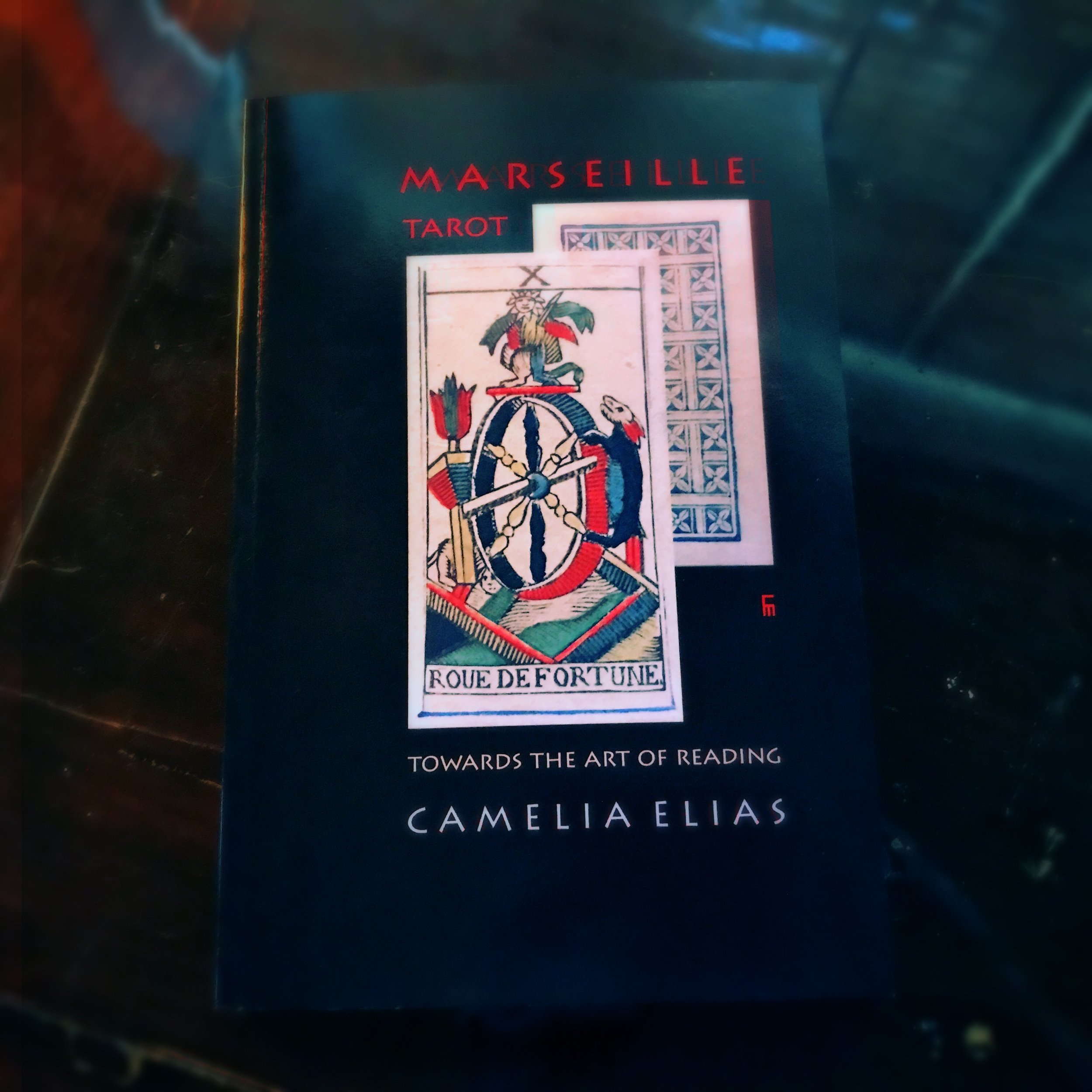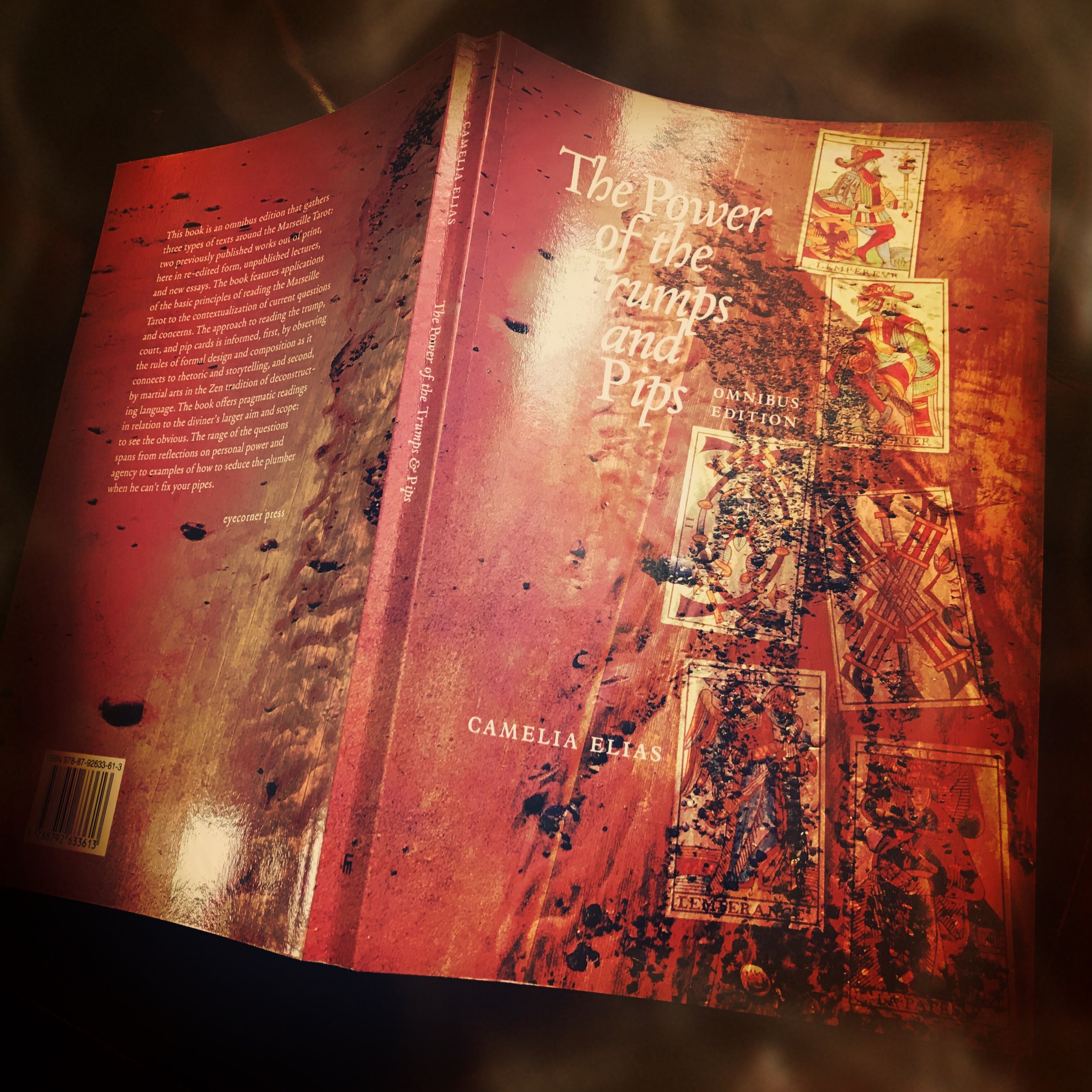
ABOUT
Hi, I’m Camelia Elias
I’m a writer, professor, and cartomancer. Since retiring from Roskilde University in 2017, where I acted as chair of American Studies for more than a decade, I’ve been dedicating myself to teaching cartomancy at my own school, Aradia Academy. In addition, I run a private consultancy practice, and continue to prolifically write books.
On this website I share selected essays and an occasional video that explore the philosophy & practice of divination with cards under the signature method of Read Like the Devil.
I also invite you here to join my practice club.
-
I present you with a collection of resources I’ve gathered from my cartomancy archives alongside with new emerging thought under the signature Read Like the Devil.
I offer an opportunity for continuous practice.
I clarify the distinction between divination as a practice and its history.
I demonstrate how sharp we can get when we look at a string of cards.
I have fun.
-
Once upon a time I read the cards without thinking that I had a signature. But then others pointed it out to me.
A dear friend and fellow cartomancer, Enrique Enriquez, kept referring to what I was doing as an activity that somehow involved the Devil. ‘You read the cards like the Devil,’ he said to me, and then he also said the same to the larger cartomantic community.
I put it on the fact that, personally, I’d often refer to my practice as one that involved just reading the damn cards. But then I went reflecting on it. What exactly was I doing that made others have such a clear image in their heads? I was going to find out about the Devil in my cards.
This exploration led to writing on several platforms such as Taroflexions and Patheos, culminating with what is now a continuous practice of writing book after book on the philosophy and practice of divination, indeed, all of it under the signature of Read like the Devil.
-
The collection of resources I’ve gathered here is intended to highlight my line of thought and practice and give a general idea of where I come from to cartomancy.
Some are familiar already with my published work and the courses in cartomancy I teach at Aradia Academy. Others have tried my fortunetelling skills.
In contrast to EyeCorner Press, Aradia Academy, and my private practice, the purpose of this website is to function as a focussed repository of knowledge and gather students in a group dedicated to a monthly practice based on written prompts and live calls.
Read texts & shuffle your cards
Whereas what I offer at Aradia Academy focusses on foundation courses and the teaching of specialized topics on enrolment basis, here I offer to meet with the students on a subscription basis in order to shuffle cards, read them, and talk about challenges in divination.
The activity in the club is centered around reading. I offer themed prompts in both written and visual form that are exclusively shared with the members of the Read like the Devil Practice Club, essays, and magical rituals.
The prerequisite is that 1) you like to read, 2) you think about what you’re reading, 3) you shuffle your cards and read them according to the proposed practices in the written material, and 4) you ask questions in the live sessions dedicated to the practice.
What it costs. This club is affordable ($10 per month), so everyone who likes to think with the cards and get precise about them is welcome. The current library of texts features over 30 solid contributions.
-
Divination is a technology backed up by set a of ideological beliefs, philosophical inclinations, and practices derived from specific cultural contexts.
History at its best describes objectively these practices and beliefs. At its worst, history is subjectively speculative and conjectural, spilling into occult and esoteric fictions and conspiracy theories.
My work focusses on divination as a technology of reading, rather than as a manifestation of historical developments.
As such my work is informed by critical studies with deconstruction leading the way. In this sense, I simply pose questions that pertain to provenance and deductive reasoning: where do ideas of associating cards with symbols come from, and why are they so arbitrary? Who stands to gain what from proposing postulates and hypotheses, many of them entirely devoid of either substance or common sense?
-
While the history of divination can be fascinating, when it comes to practice I see little value in it. When I sit with a predicament in a divination session with the purpose of answering questions, shifting the focus to lecturing on when a deck of cards was made, where it was made, and by whom is not a good idea.
Whether the Tarot has Egyptian roots, is a Neoplatonic construction, or comes from Jupiter is of little relevance when you sit with someone who would like to know how to score a job interview. The images alone can do the trick of giving the person who looks at them just enough to think about. Are we with the Popess presenting her credentials, or the Sun that calls for highlighting connection?
Reading cards with an active critical nerve and an eye for composition, design, balance, color, symmetry, rhythm, metaphor, rhyme, and agency, in other words observing and thinking about what we see, is also the opposite of reading cards according to memorized lists of random symbolic meanings.
The practice I propose here follows a pragmatic approach: I meet the students who subscribe to the Read like the Devil Practice Club on a monthly basis, and for a short, yet powerful stint, we just read the damn cards.
-
There are no prerequisites for joining the practice club, other than the 4 stipulated above, again: 1) you like to read, 2) you think about what you’re reading, 3) you shuffle your cards and read them according to the proposed practices in the written material, and 4) you ask questions in the live sessions dedicated to the practice.
The monthly lives sessions are recorded and sent out to you alongside with all the exclusive written material for the club.
Once on board, in addition to the future contributions, you'll have access to all the current material in the club, work that has accumulated since May 2023.
Read more about it here.
-
While you don’t need anything to join the club, you may want to grab a few seminal titles to get you started and to begin with.
The image links below send you to EyeCorner Press where you can read more on how to order. For a more in depth idea on which book I wrote that is best to start with, read this survey essay here.
-
You can hop on board any time, and thus have access to all the future and current material that has been accumulated in the club since the club opened in May 2023.
If you don’t want to continue your subscription for whatever reason, you can hop off the program any time.
The fee is $10 per month payable per quarter, so you will be charged $30 every third month, including your entrance to the club.







